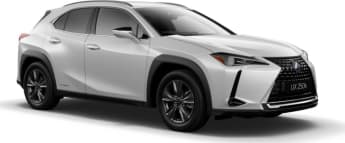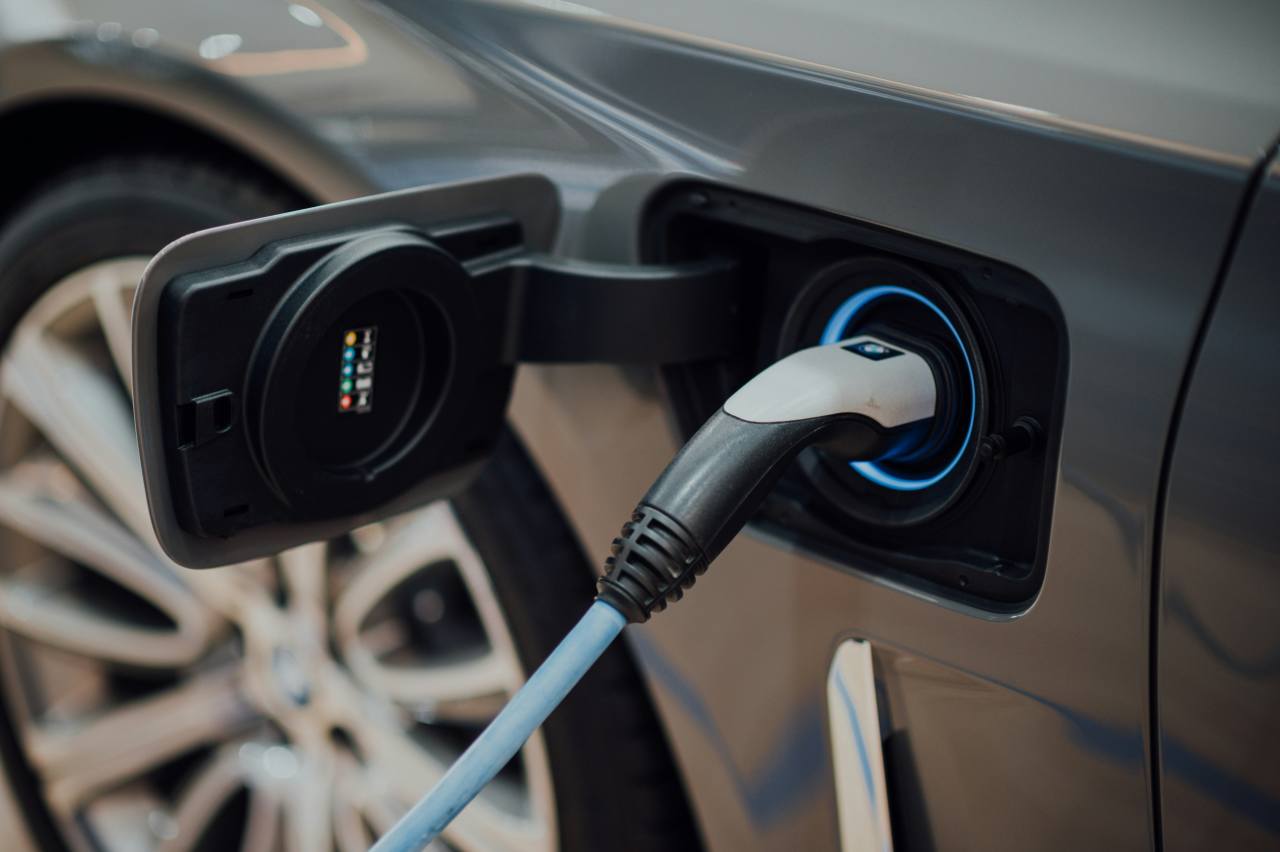Most cars get secretly cheapened as they travel through their model lifecycles.
Yes, while facelifts often usher in headline advances like updated electronics and more equipment to boost attention, in too many cases, engineers are forced to cut costs, especially where they cannot be very easily detected, such as with removed sound-deadening, inferior carpet quality and deleted minor items, like bonnet struts. Hello, latest Ford Ranger!
Every cent saved is extra profit made.
Now, we cannot tell at what level – if any – the penny-pinchers pilfered the Lexus UX for its Series II update last year, but the completely unexpected result is a small SUV/crossover that feels and drives noticeably better than before.
Keep reading to find out how and why.
Lexus UX250H 2023: Luxury +EP2 +AW18 Hybrid
| Engine Type | Inline 4, 2.0L |
|---|---|
| Fuel Type | Unleaded Petrol/Electric |
| Fuel Efficiency | 4.5L/100km (combined) |
| Seating | 5 |
| Price From | $51,920 - $59,730 |
| Safety Rating |
|
Price and features – Does it represent good value for the price? What features does it come with?
Let’s list those changes briefly, as they inform the car you see before you.
The pre-facelift UX released in 2018 was criticised for riding too harshly and not being fun enough to drive.
So, Lexus says the MY23 version’s steering rack is better braced, the suspension and rear adaptive dampers have been retuned, the chassis gains more spot welds for added rigidity and the body is now stiffer and stronger than before. These are learnings directly applied from the UX300e EV version released in late 2021.
.jpg)
Most buyers will probably be more impressed with a now two-inch larger touchscreen, updated and (at long last!) easier-to-operate multimedia system, post-crash emergency services-callout should the driver end up incapacitated, upgraded voice recognition system, more-effective lane-keep assistance, improved traction through corners, better surround-view monitor and jazzed-up trim presentation.
Collectively, they strive to finally bring the expected/demanded on-brand qualities lacking from the previous model and in the UX’s largely-patchy competitor set – namely the Audi Q2, BMW X2, Jaguar E-Pace, Mercedes-Benz GLA and Volvo XC40.
This is especially so when sizing up the entry-level front-wheel drive grades (euphemistically dubbed 2WD at these exalted heights) of each, as we have done with the least-expensive hybrid version of the UX, the 250h Luxury from $53,820 (all prices are before on-road costs).
.jpg)
Costing nearly $8000 more than the base 200 Luxury petrol version, the hybrid accounts for the lion’s share of sales, and really has no direct electrified premium rival at that price point, except in the recently-released Alfa Romeo Tonale Ti from $49,900 – though that’s a mild-hybrid set-up with a 48-volt battery.
Along with an electric motor and a small Nickel-metal Hydride (Ni-MH) battery, the 250h Luxury is compellingly equipped for a base grade, including a 12.3-inch touchscreen, wireless Apple CarPlay, wired Android Auto, Bluetooth telephony, ‘Hey, Lexus!’ voice recognition, 10-speaker audio, digital radio, satellite navigation, remote engine-start/door-unlocking/hazard flashers/buzzer, acoustic windscreen glass, heated/powered mirrors, powered steering column, heated/powered front seats, climate control, keyless entry/start, a powered tailgate, roof rails, alarm and 17-inch alloys.
.jpg)
The 250h Luxury also comes with ‘Enhancement Pack 2’, featuring a powered tailgate with kick sensor, a wireless phone charger, cornering lights, headlight cleaners and rear privacy glass.
On the safety front, there’s all the usual driver-assist tech equipment including Autonomous Emergency Braking (AEB), lane-support systems and rear-cross traffic alert, amongst other items. Check our safety section for a full rundown.
So, yes, the UX 250h Luxury represents strong value. Even for a luxury-branded vehicle.
EV Specs for Lexus UX250H 2023
| Drivetrain | Series parallel hybrid |
|---|---|
| Battery capacity | 1.4kWh |
| Battery type | Lithium-ion |
| Electric range | <1km (WLTP) |
| Combined range | 1000km |
| Plug type | n/a |
| DC charge rate | n/a |
| AC charge rate | n/a |
| Electric motor output | 80kW/202Nm |
| Combustion engine output | 107kW/188Nm |
| Combined output | 135kW/205Nm |
| Petrol efficiency | 4.5L/100km |
| Electric efficiency | n/a |
Design – Is there anything interesting about its design?
A hefty portion of the UX’s engineering underneath is shared with the popular Toyota C-HR. Not that you would necessarily know that by glancing at it.
Even five years on from launch, the current model looks slick and contemporary, and it seems to have informed the styling of newer, larger Lexus SUVs like the latest NX.
Not that you’d call the UX an SUV – it’s very much a higher-riding hatchback, with a ho-hum 160mm of ground clearance.
To put that in perspective, other crossovers are taller: the GLA has 213mm, while Subaru’s new Crosstrek boasts 220mm. At least the UX’s is loftier than the C-HR and its pitiful 137mm.
That said, the angular wheel arches and wide-track stance serves the Lexus well.
.jpg)

Practicality – How practical is its space and tech inside?
The UX’s compact crossover-esque hatchback proportions have implications inside. Inevitably, this is no larger than the (related) Toyota Corolla, despite having the higher seating position.
Beyond that, though, the 2023 model highlights how Lexus has made its so-called ‘gateway’ model better than before.
For starters, despite being the base grade, this UX has a properly premium ambience, backed up by exceptional fit and finish.
From a sensory perspective, the UX looks, smells, feels and sounds like a Lexus should. And by the latter, we mean the cabin is pleasingly isolated from the outside world.
The overhauled touchscreen and multimedia system is a huge step forward for the series. The larger new display looks great and works well – what a monumental improvement over the infuriatingly fiddly old set-up. It’s difficult to see how they’ll improve it. Dependable and glitch-free. Are you listening, all European manufacturers?
.jpg)
Meanwhile, the carryover parts that worked well enough before continue to impress.
The UX’s front seats are sumptuous in their cushy softness and comfort, yet provide sufficient support over longer driving distances.
There’s also the excellent driving position, with most switchgear within grasp. There’s just enough space for taller people to settle in nicely up front. And the basics like ventilation and storage are thoughtfully executed. The climate in the UX is always fine.
Negatives? Don’t worry, we’ve identified several.
As mentioned earlier, the now-better-equipped Luxury does have all the essentials. But for a car that’s approaching $60K-drive-away, we’d expect kerb-side mirrors that dip down when reversing to avoid damaging alloys against gutters; we couldn’t get ours to auto-fold when locking up, either.
.jpg)
Driver vision out isn’t great. Thick pillars and that rising shoulder line make changing lanes and reversing a technology-reliant affair, as it’s difficult to see objects that are too-easily obscured. For the same reasons, a front camera would be useful in this grade.
Others might expect a sunroof, or cooled seats that massage, or a head-up display for the instrumentation, but we’d argue that they’re hardly necessities. Lexus has to upsell buyers to something.
Moving on to the back-seat area betrays the UX’s compactness most.
The back doors have small apertures. Entry/egress is challenging for folk with long legs. Legroom is tight, and three adults abreast would be a struggle, so it’s best to treat the littlest Lexus crossover as a four-seater.
Yet headroom is fine, the appearance and finish remain first class as it is up front, and the basics are all present – air vents, grab handles, coat hooks, overhead lighting, one map pocket, centre armrest with cupholders, two USB outlets, and windows that wind all the way down. Narrow front seats aid with light, vision and ambience, too.
.jpg)
Further back, the luggage area is pretty petite for an SUV, though the boot is (slightly) larger than the Corolla and Mazda3’s. That powered tailgate is useful if your arms are full, but the loading lip is high.
Normal boot floor depth is shallow but most of that flooring can be removed to reveal a hidden compartment underneath.
Small side pockets are also useful. You’ll find a 240V outlet. Bag hooks and floor tie-down hooks are fitted.
And – being a hybrid – there’s no spare wheel, just a tyre inflation kit. And the flimsy cargo cover is there only to keep prying eyes out.
Not big on utility, then, but the UX is true to its role as a Lexus in concentrate form.
.jpg)
Under the bonnet – What are the key stats for its motor?
The UX’s Corolla/C-HR connection continues with its 2.0-litre (1987cc) twin-cam four-cylinder petrol engine, delivering 107kW of power at 6000rpm and 188Nm of torque between 4400 and 5200rpm.
The 250h Luxury pairs that with an 80kW/202Nm permanent magnet motor and 1.4kWh Ni-MH battery, for a combined power output of 135kW. A second, rear-mounted motor is available in higher grades, providing all-wheel drive. But not in this Luxury guise.
As with most Toyota and Lexus hybrids, charging is only via the petrol engine and recuperated energy from braking. Electric-only drive is only offered during brief spells of low-speed light-throttle driving, or off-throttle coasting where conditions allow.
.jpg)
Drive is sent to the front wheels via an electronically-controlled continuously variable transmission (CVT). Three modes are offered – 'Eco', 'Normal' and 'Sport'.
Tipping the scales at 1625kg (kerb), the 250h Luxury offers a power-to-weight ratio of nearly 83.1kW per tonne. That’s a hefty output for a hybrid. Top speed is 177km/h, with 0-100km/h needing 8.5 seconds.
Underpinning that performance is a MacPherson-style strut-front and a multi-link rear suspension set-up.
Efficiency – What is its driving range? What is its charging time?
Officially, the 250h averages an impressive 4.5 litres per 100km on the combined cycle, which is just 103 grams per kilometre of carbon-dioxide emissions.
Now, out in the real world, with plenty of inner-city and urban driving as well as a spell of fast highway runs punctuated by some very heavy-footed acceleration, we managed just under 7.4L/100km pump-to-pump.
That’s not too bad given how hard our UX was caned. The trip meter showed 5.6L/100km over the same distance (nearly 400km).
This is one Lexus hybrid that will happily sip from the standard 91 RON unleaded petrol pump. With a fuel tank capacity of a smallish 43 litres, expect a range of between 930km and 1000km.
For a luxury small crossover, these are economical figures.
.jpg)
Driving – What's it like to drive?
Before driving the 2023 UX250h hybrid, there was some trepidation.
All versions of the original series from 2018 were tested previously, and in every one bar the base 200 on small wheels and tyres, none lived up to the promise of a premium Lexus crossover. A harsh ride, excessive noise intrusion and dull handling made this model a disappointment.
That’s all in the past, thankfully, thanks to a sustained program to save the UX from mediocrity. The company really got the basics wrong the first time around with the horrid CT200h predecessor back in 2011, so we imagine that it would be damned if this was going down the same sorry path again.
In the 250h Luxury, as reviewed here, it is difficult to objectively fault the way everything works and drives.
Let’s start with performance. Even in Normal or Eco mode, the UX steps off the line briskly, and initially at least, it’s the electric motor and battery that silently whooshes the car forward.
.jpg)
If you’re gentle, you can reach speeds of up to about 40km/h before the petrol engine chimes in unobtrusively.
Beyond that, there’s a stream of electric power you can feel, keeping the acceleration coming on strong, even as speeds rise above 100km/h.
This is also true for Sport mode, except that it all happens a bit quicker and earlier, and with extra urge.
And the welcome news here is that the CVT doesn’t really make the engine sound too droney, unless the driver is mashing the pedal to the metal.
Travelling along at normal urban speeds, there’s a seamless transition from electric-enhanced petrol propulsion back to electric-only if the conditions are right – such as when coasting off-throttle.
.jpg)
This is most common in heavier traffic, and the resulting smoothness and quietness adds to a refined and relaxed experience.
About our only objection is when you apply the brakes. In our test car, they felt a little on/off, like a switch. At times, they seemed too grabby for smooth stopping.
That said, the driver can downshift using the gear lever to provide powertrain braking, to help minimise snatchiness.
Road noise seems to be more muted than before, supporting Lexus’ claims that retuning the suspension and beefing up the structure/chassis has helped with refinement.
We wouldn’t say the UX is at the top of the class for quietness, especially on Australia’s coarse-bitumen highways, but now things have hushed sufficiently enough for a crossover purporting to be a premium.
.jpg)
Where the suspension changes really transform the UX, at least on the 215/60R17 tyres the Luxury wears, is how much softer and comfier the ride is.
Where before there was suddenness there’s now suppleness, substantially improving the experience. We wonder whether the bigger-wheeled rubber the richer grades receive are as well-resolved.
As the 250h Luxury is not trying to be a hot hatch, the resulting body lean through fast corners is a happy trade-off, though it’s not so roly-poly that handling composure is adversely affected.
Plus, the steering – while light and easy at parking speeds – still offers enough response and feedback for most drivers to enjoy taking the UX for a cross-country blast once in a while.
To that end, the steering’s weighting does increase in Sport mode… though you won’t be selling your Peugeot 205 GTi for one just yet, but that previous dullness is history. In fact, whether behind the wheel or ensconced in one of the inviting outboard seats, the UX250h as a whole is a much sunnier experience all-round than before.
Warranty & Safety Rating
Safety – What safety equipment is fitted? What is its safety rating?
Tested in 2019, the UX has managed an ANCAP crash-test rating of a maximum five stars. The rating applies to all models built from October, 2020, onwards.
That’s no surprise, given the level of standard safety equipment fitted, even to this entry-level 250h Luxury grade.
You’ll find eight airbags – dual front, side chest, side head and driver and passenger knee – as well as Lexus’ ‘Pre-collision safety system’ with AEB for pedestrian (day/night) and cyclist (day) detection and daytime intersection assistance.
The AEB functions from 10km/h to 180km/h and the lane support systems between 50km/h and 180km/h.
.jpg)
Also included is lane-keep assist, speed-sign recognition, rear cross-traffic alert, parking support braking, blind-spot monitor, emergency steering assist, auto high beam, full stop/go adaptive cruise control and front and rear parking sensors.
Anti-lock brakes with brake assist and electronic brake-force distribution, traction control, stability control, active cornering assist, four-wheel disc brakes and a reverse camera are fitted.
Lexus’ Connected Services offers SOS emergency call, stolen vehicle tracker and other GPS-based assistance features.
The outboard rear seats include ISOFIX child restraint anchors and there are three top tethers for baby capsule/child seat straps across the second row.
Ownership – What warranty is offered? What are its service intervals? What are its running costs?
Lexus offers a five-year/unlimited kilometre warranty and roadside assistance.
Service intervals are at 12 months or 15,000km.
The first three scheduled services are capped at $495 each, with the work carried out detailed online.
.jpg)
Verdict
Most cars get worse as they age as their makers try and save pennies by scrimping on quality and features. But the reverse seems to be true for the Lexus UX.
The 250h Luxury 2WD we tested is the car that the brand should have launched with back in 2018, with an appealing balance of performance and economy, comfort and sporty handling, as well as refinement and features. The UX has finally come of age.
Pricing Guides




.jpg)


.jpg)

































.png)


_0.jpg)




.jpg)


Comments